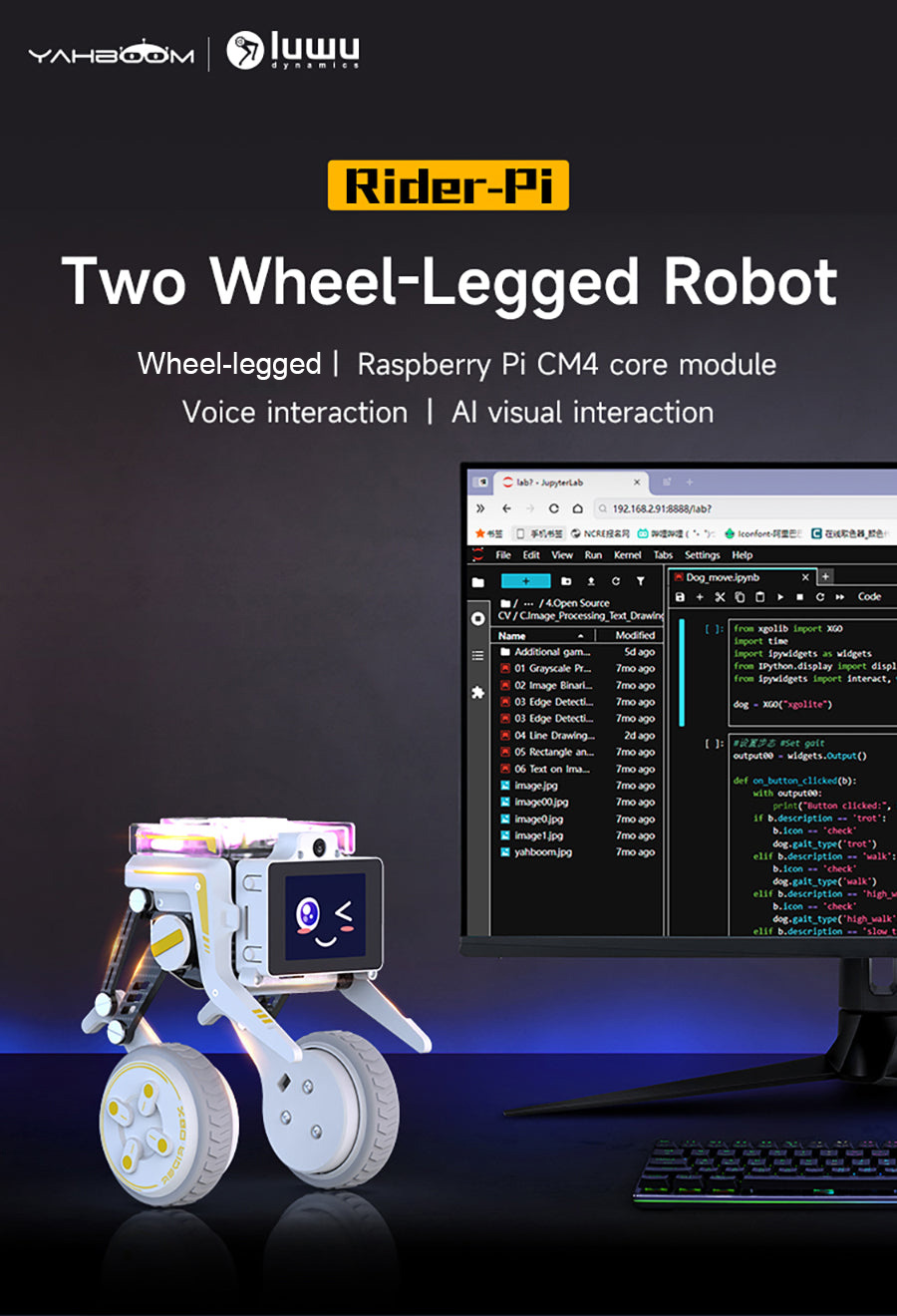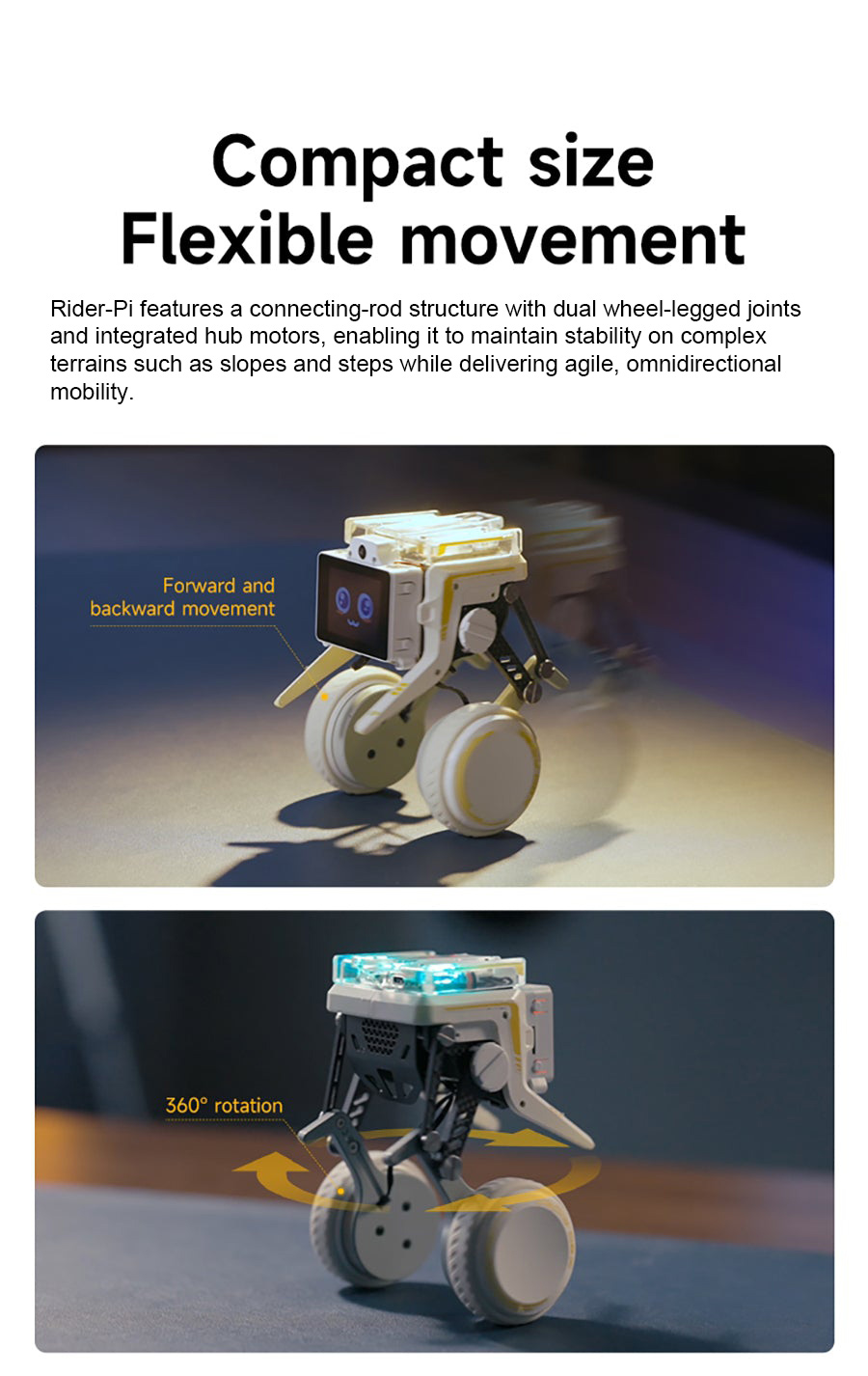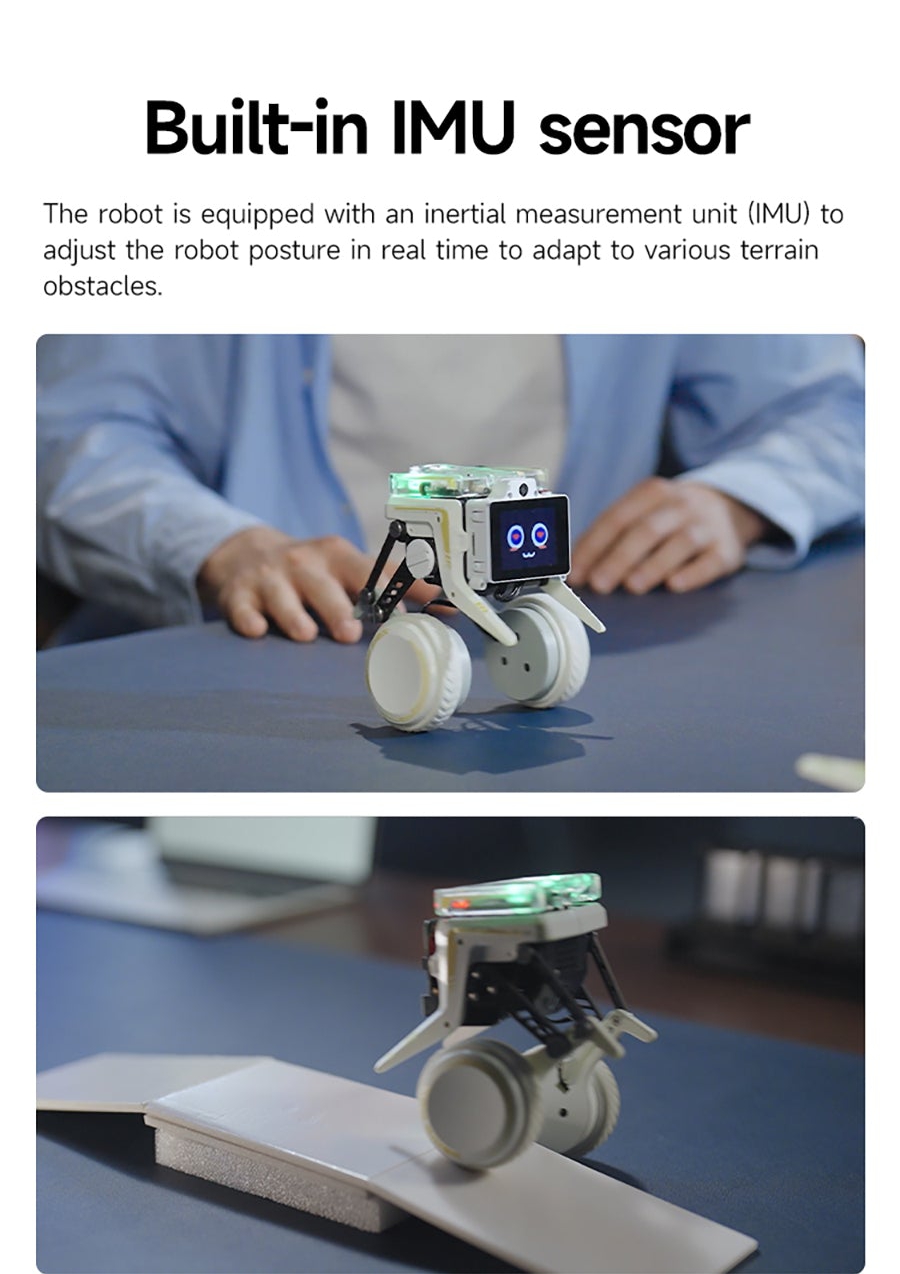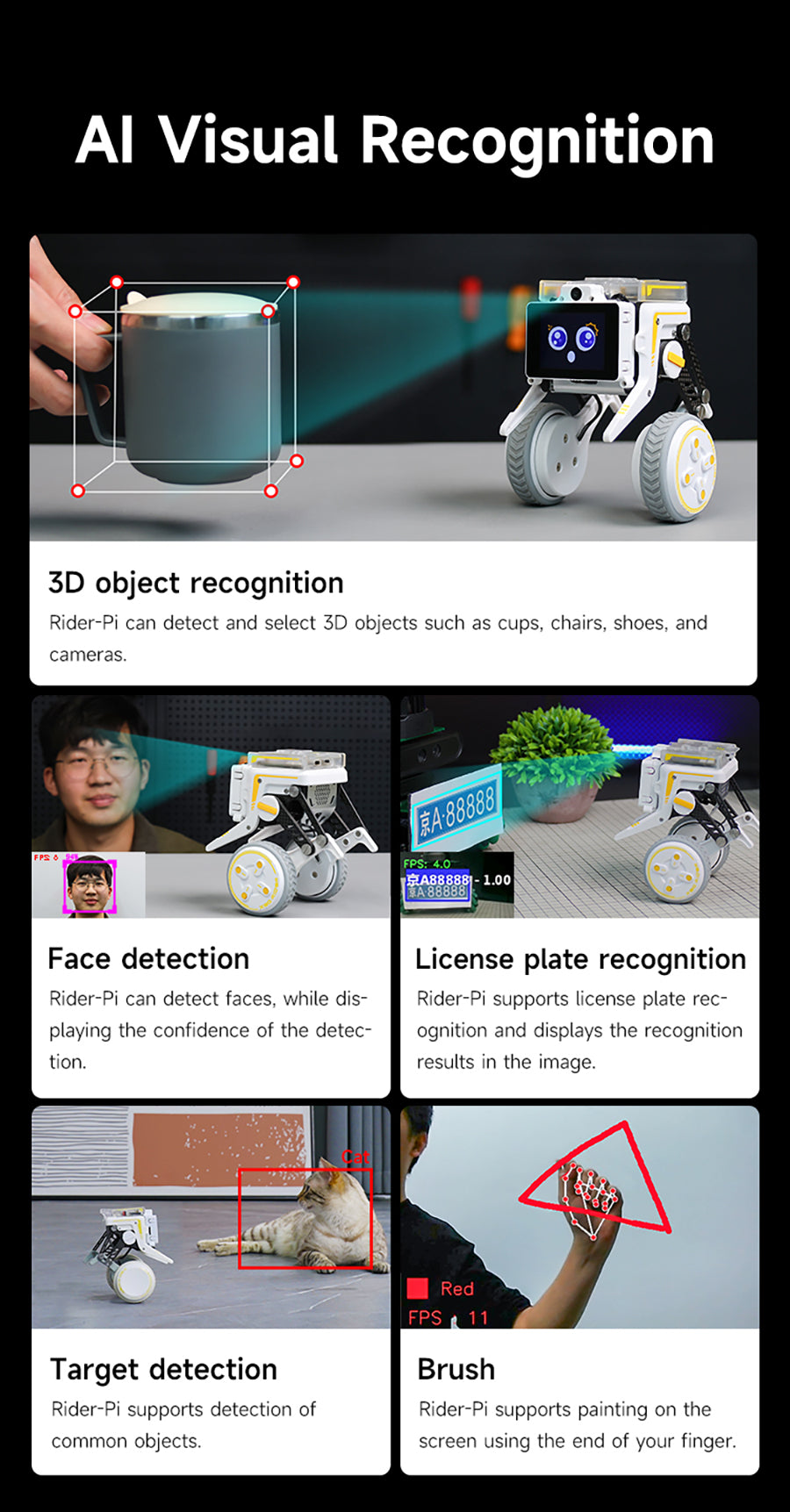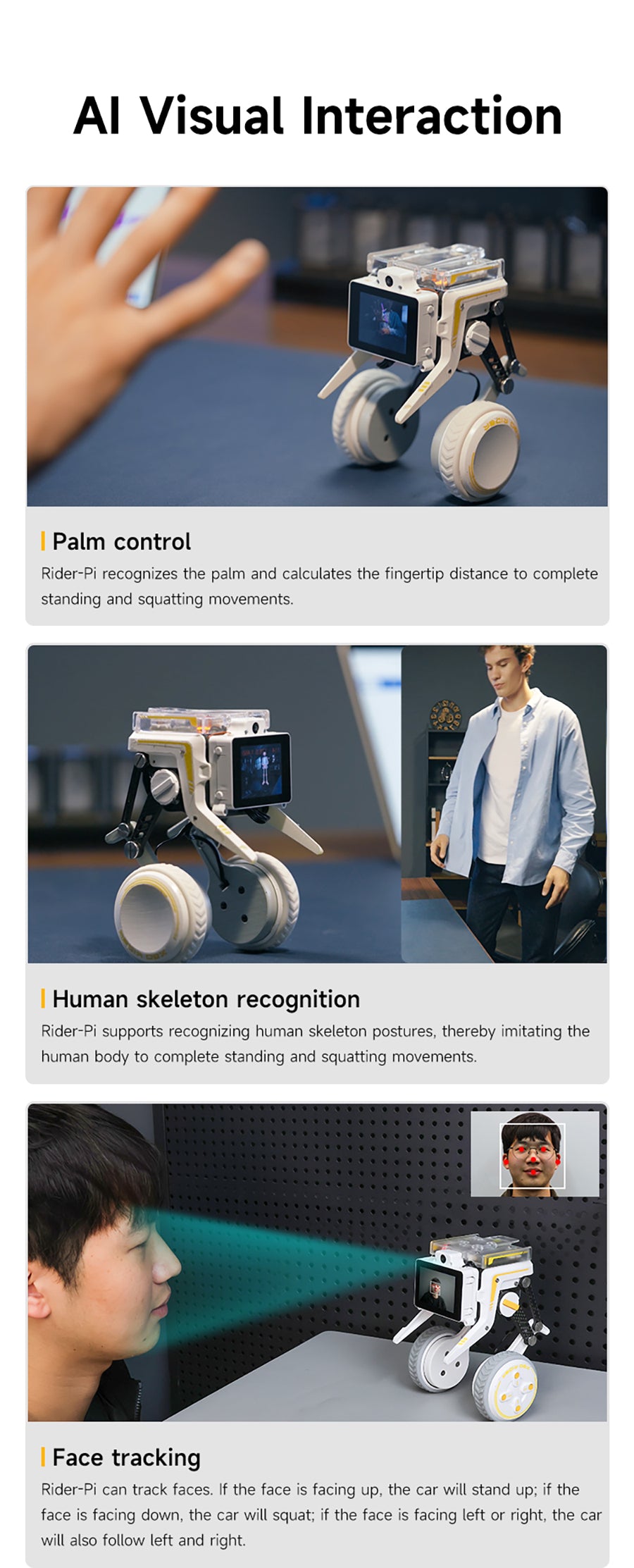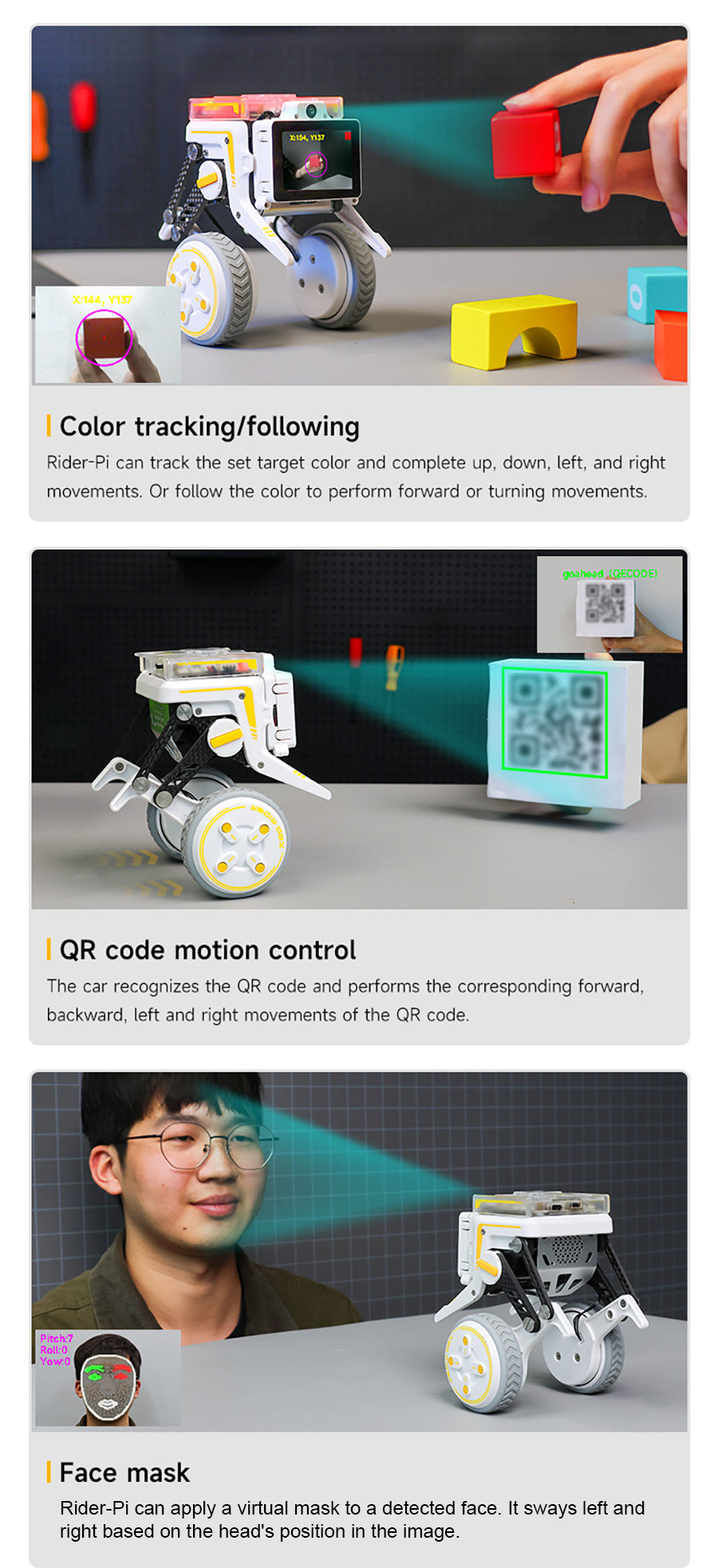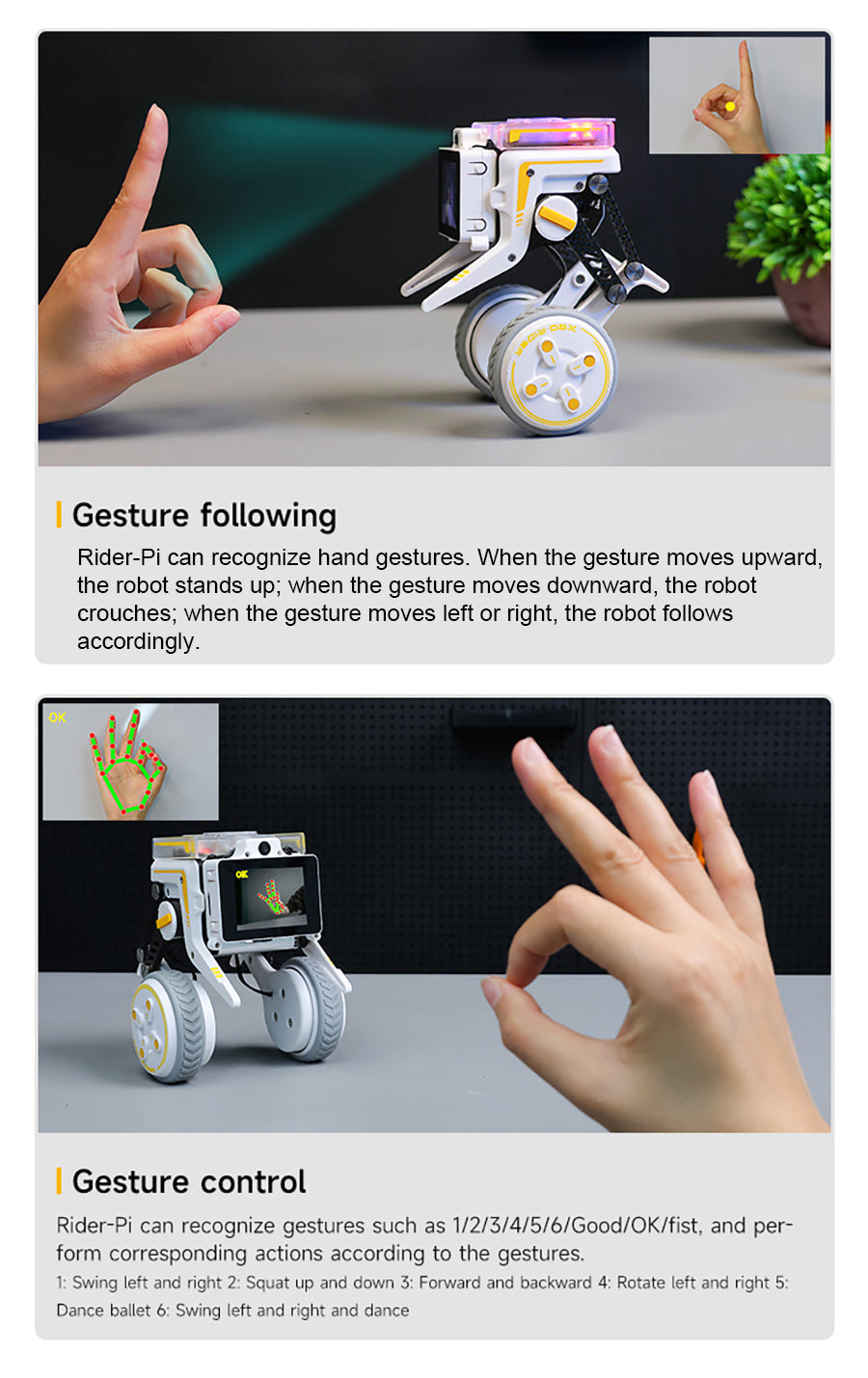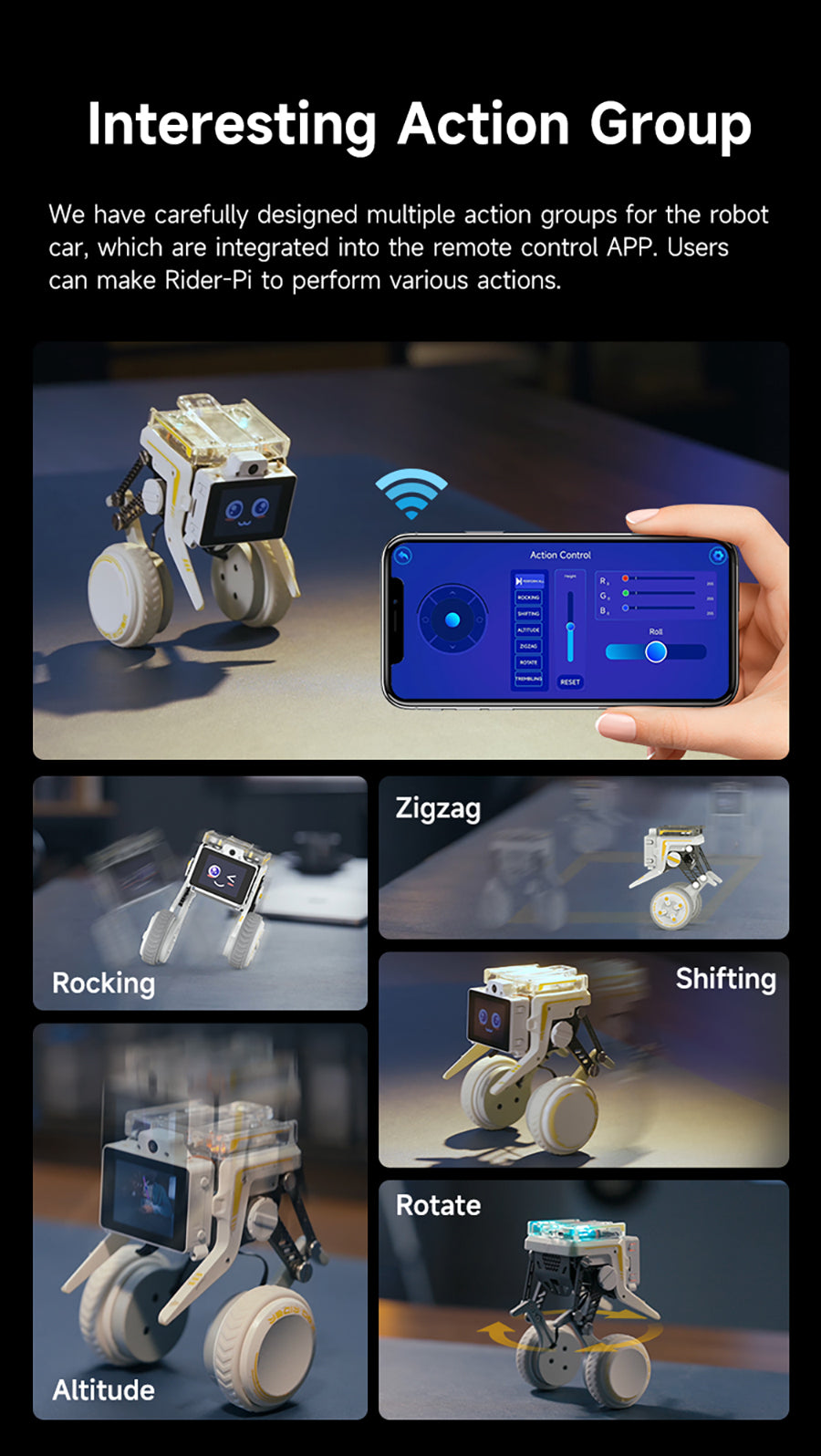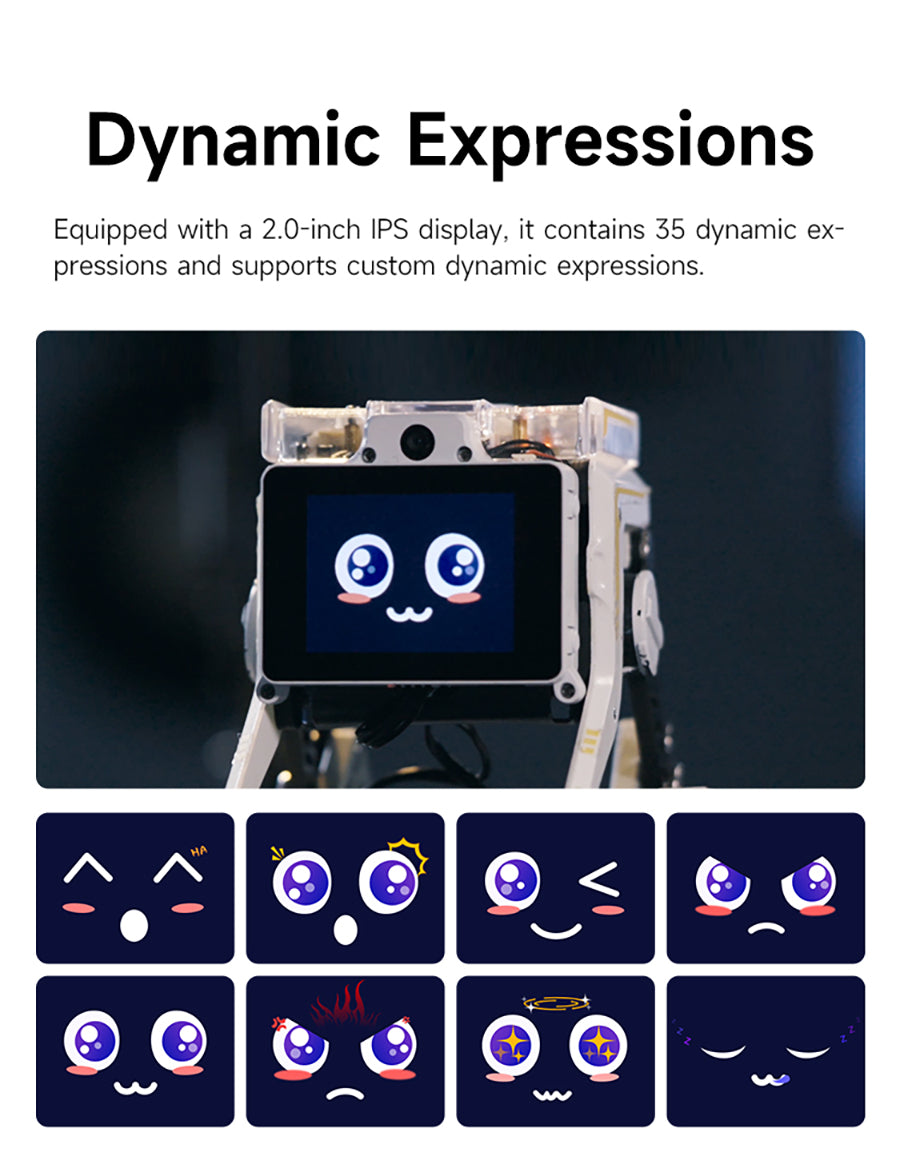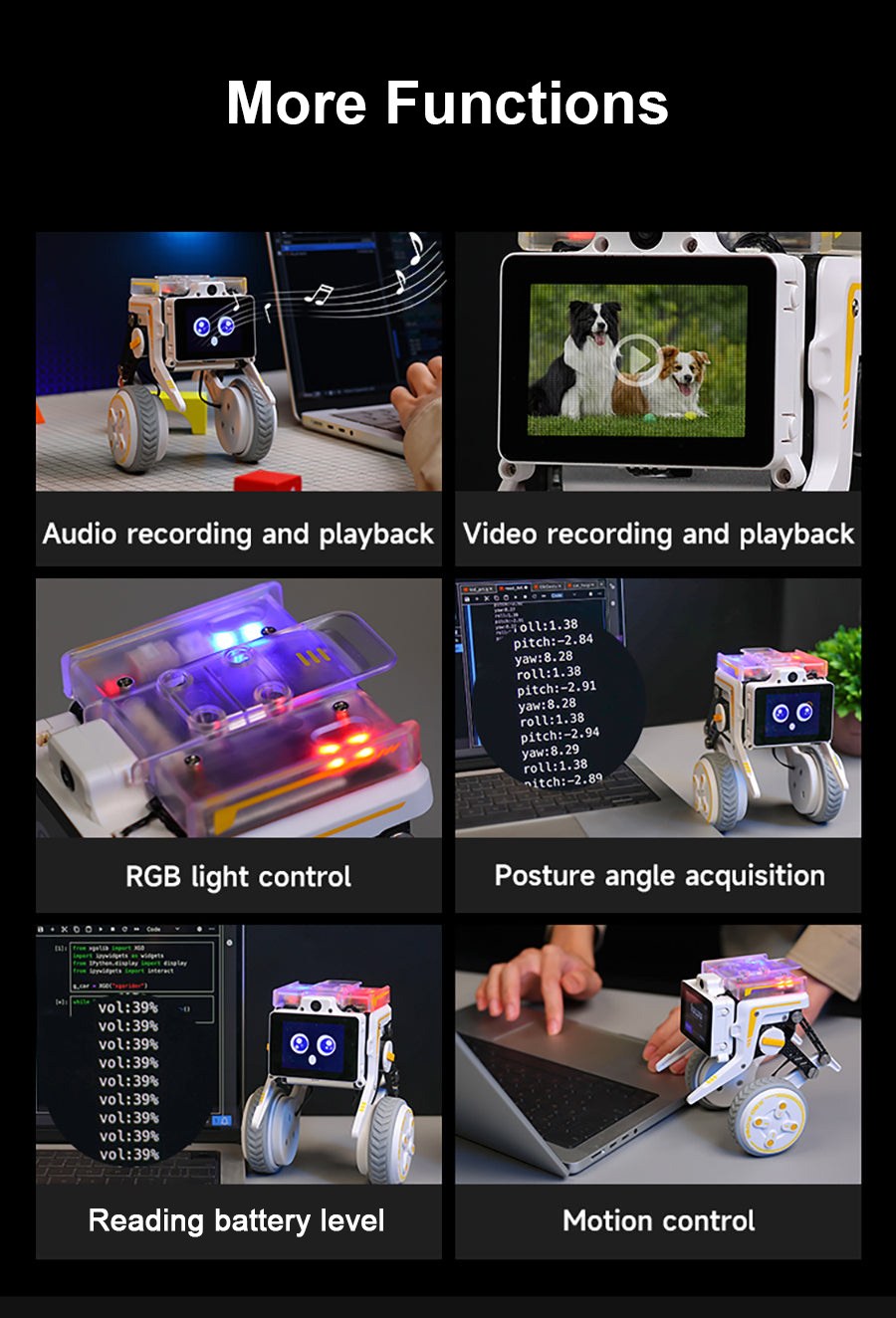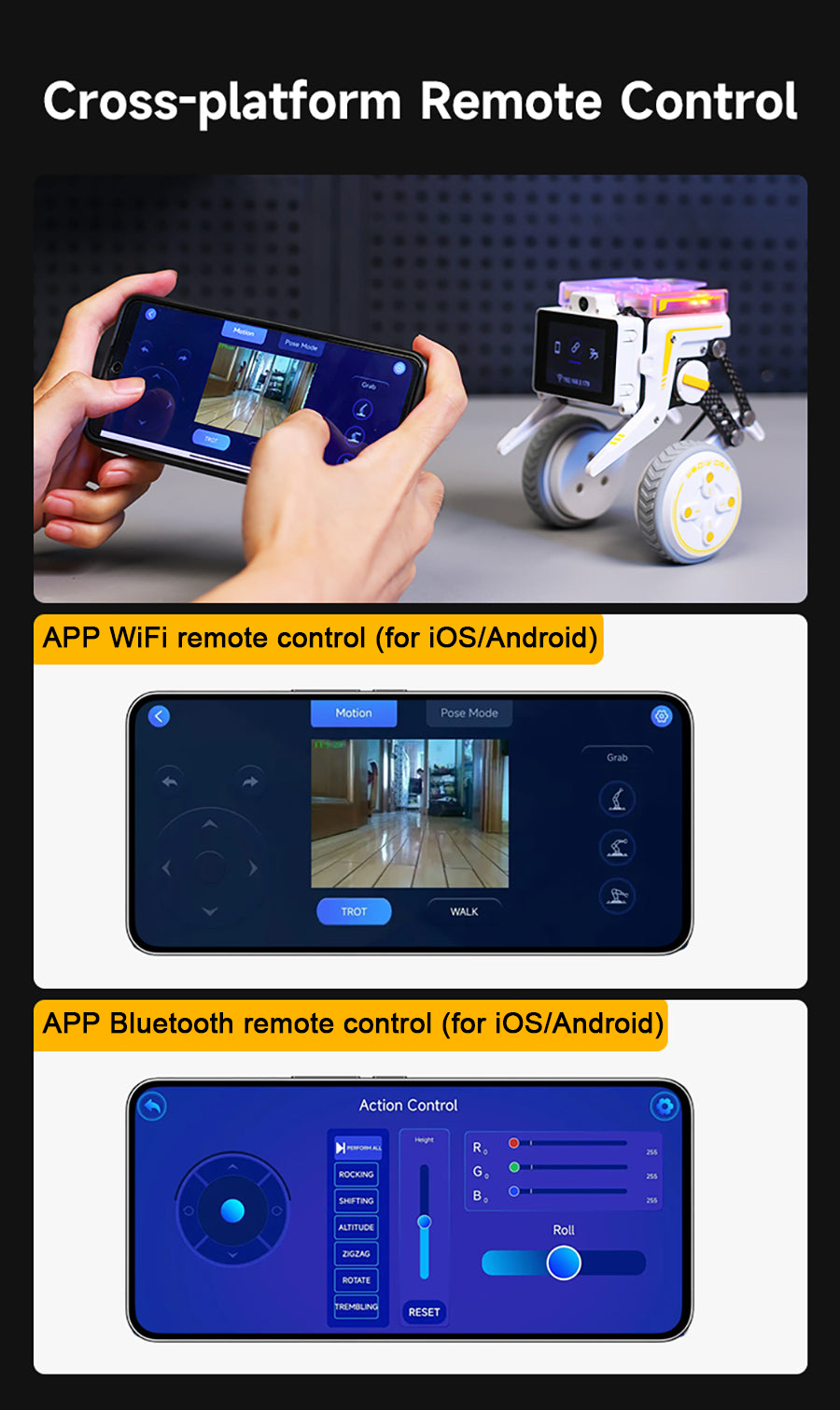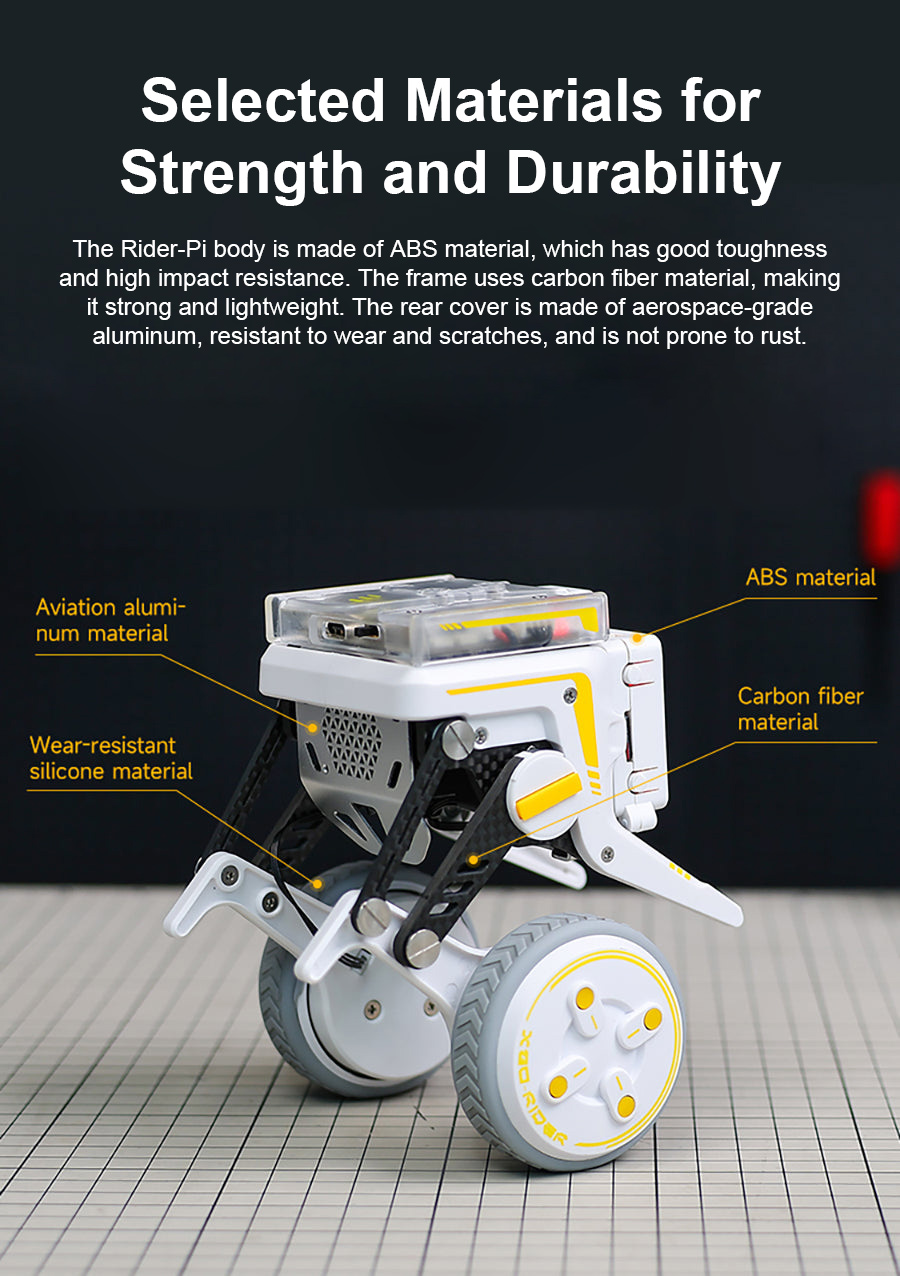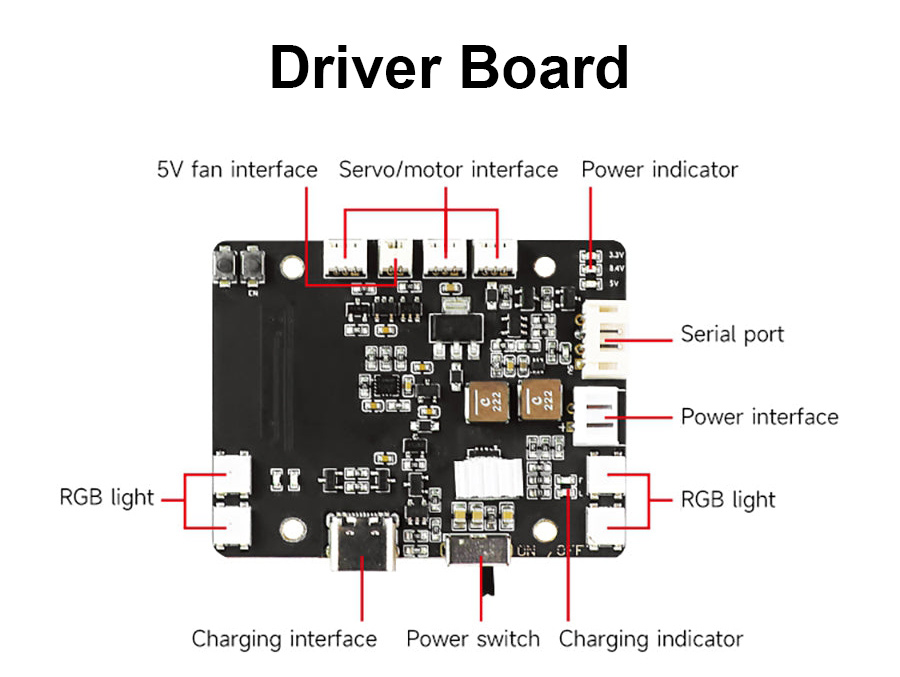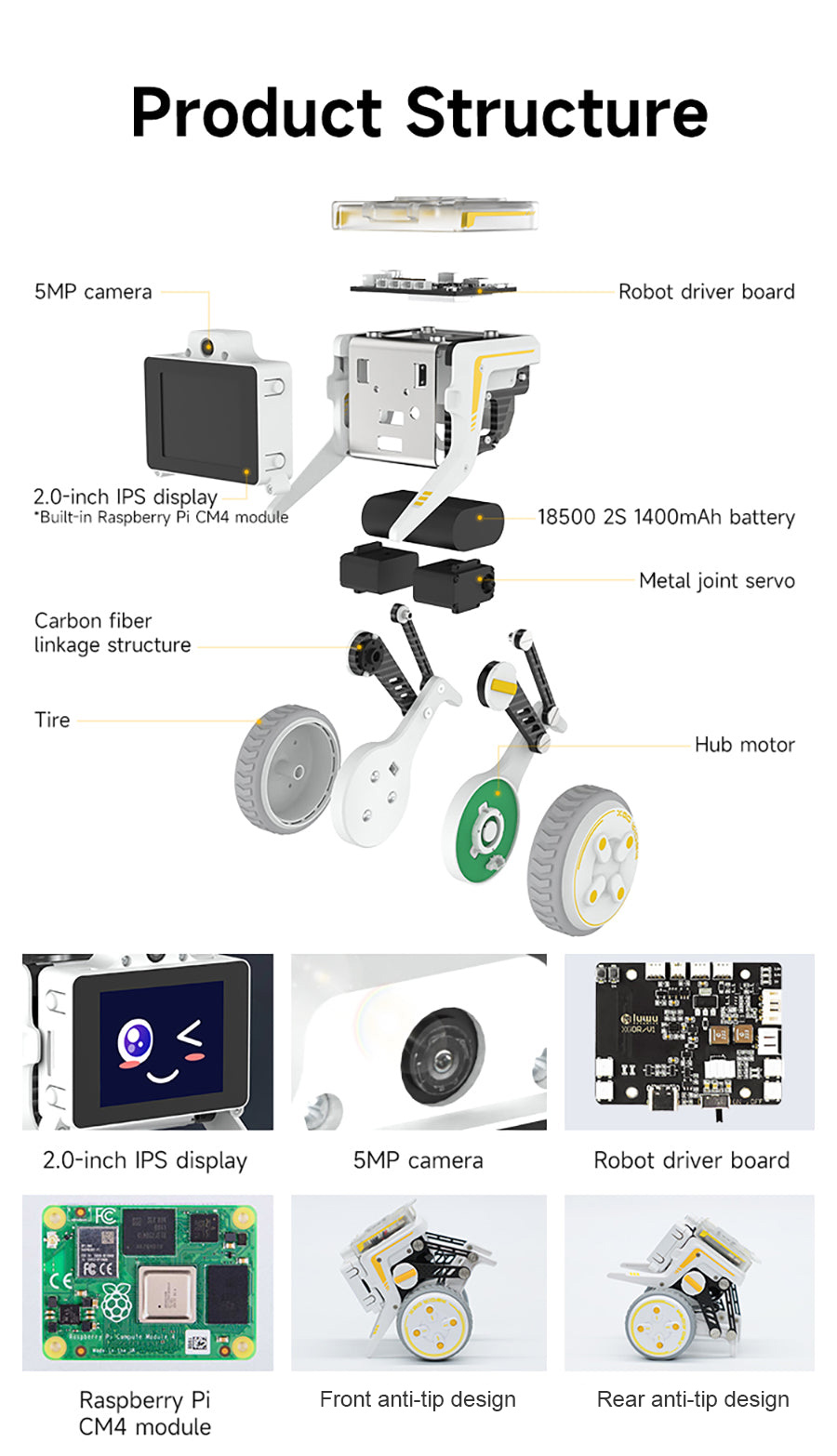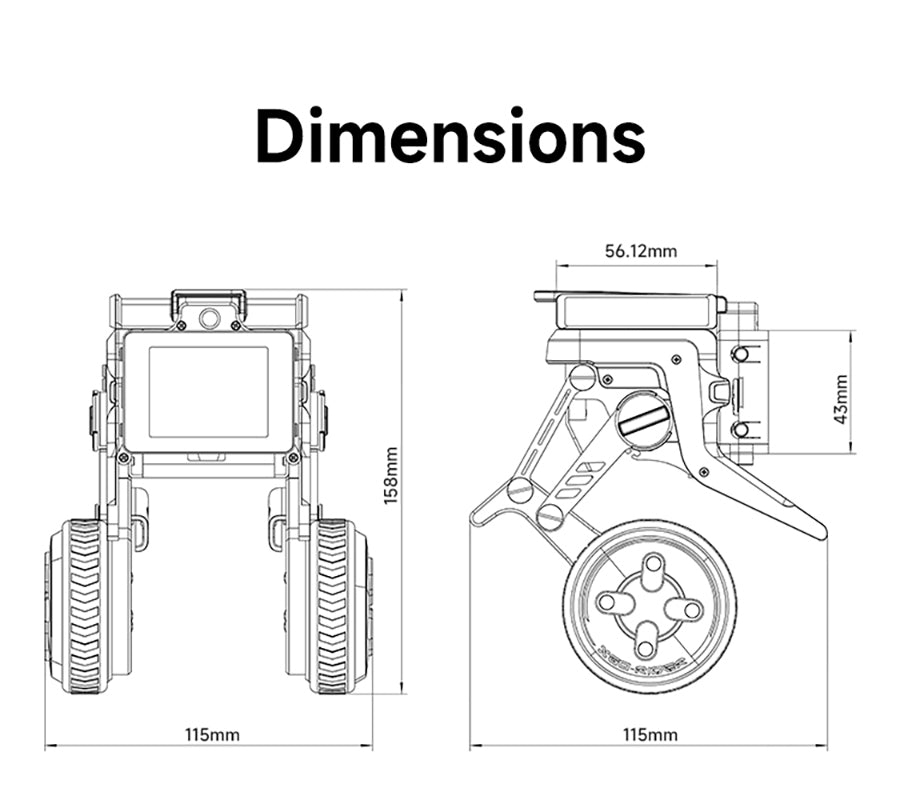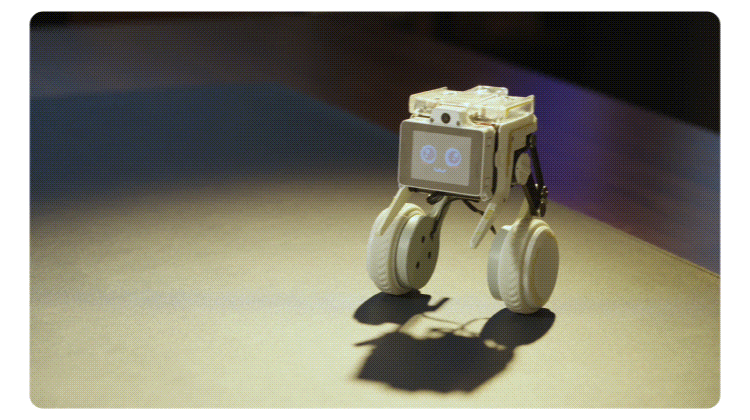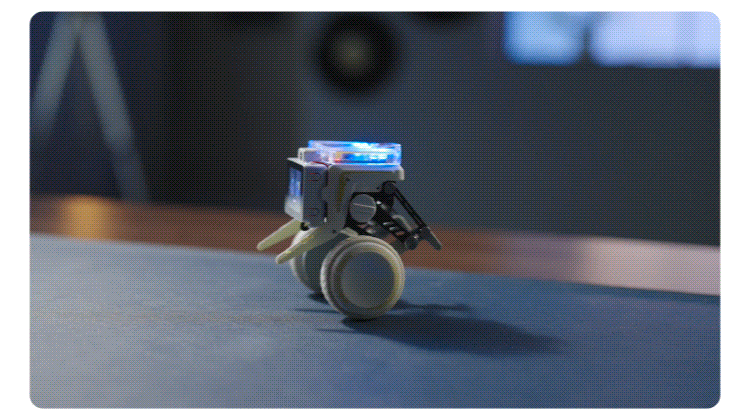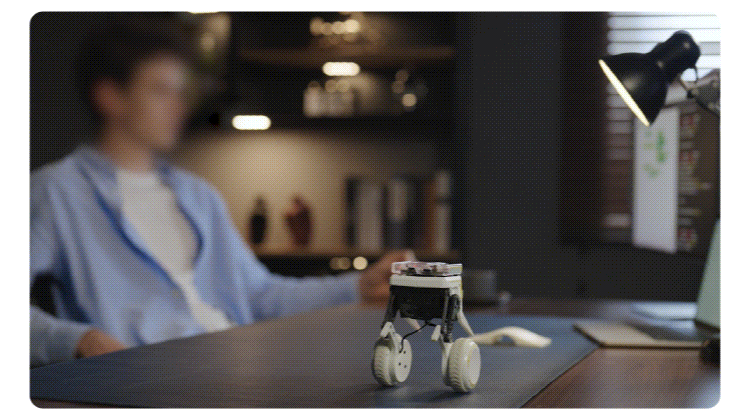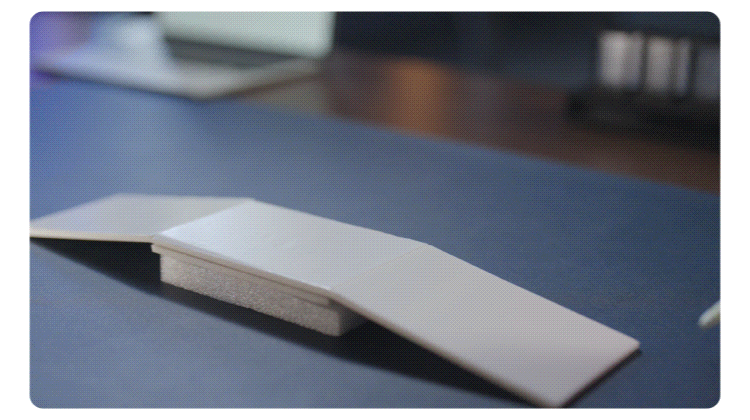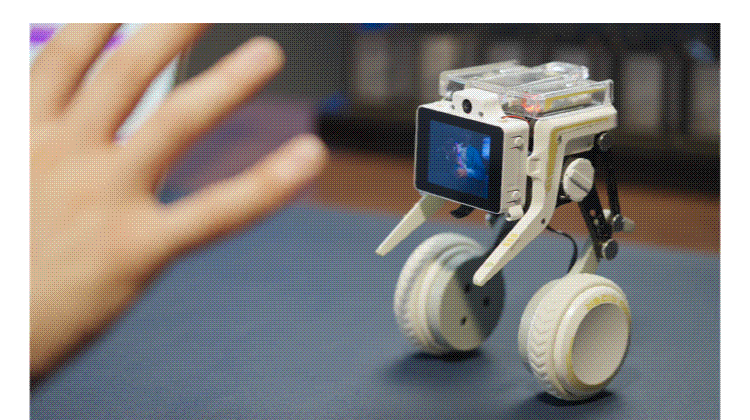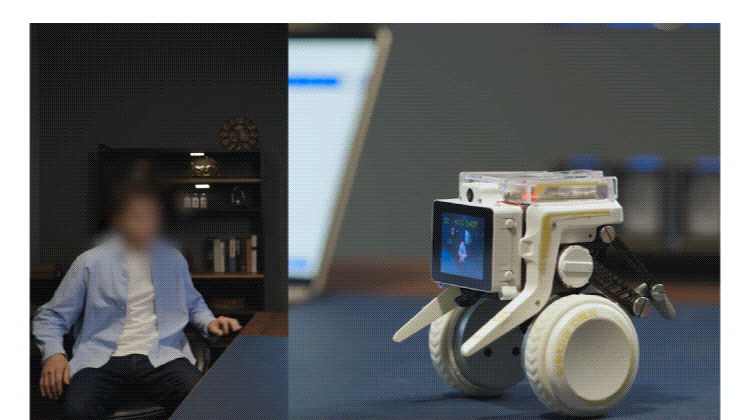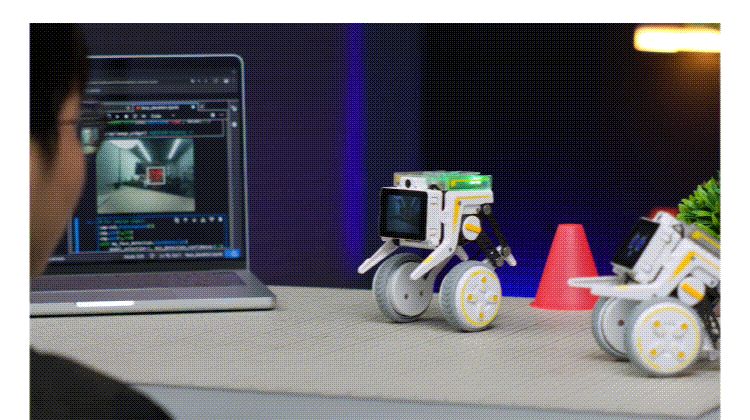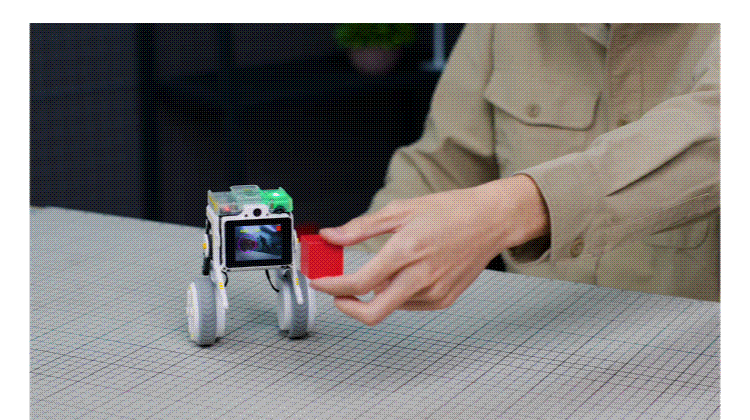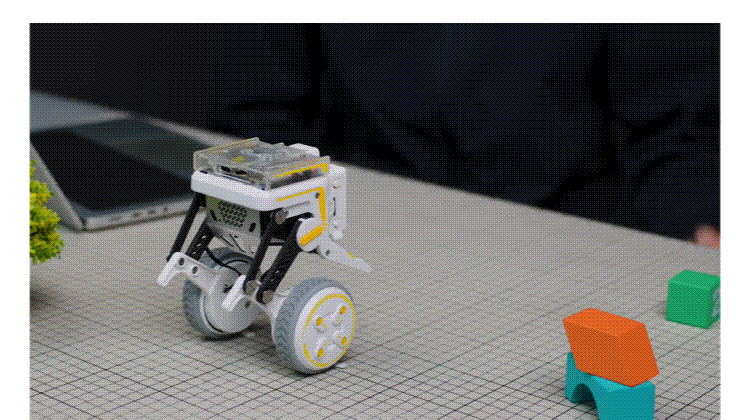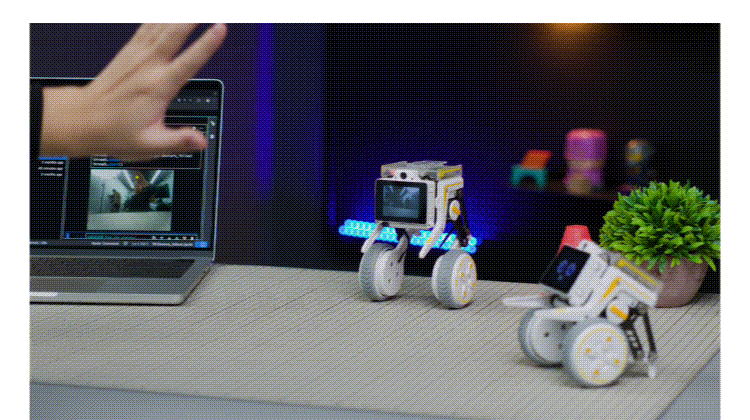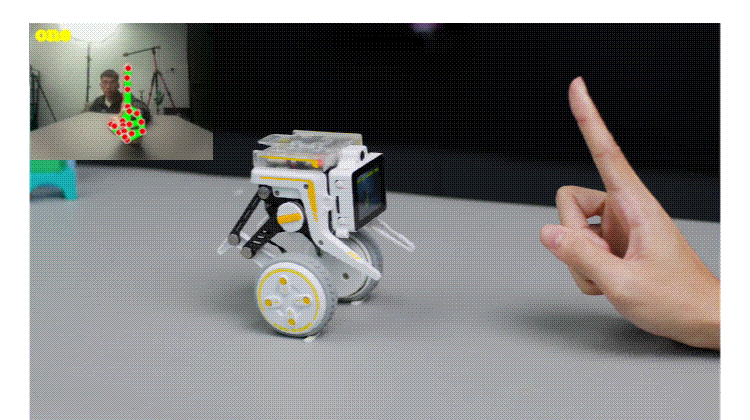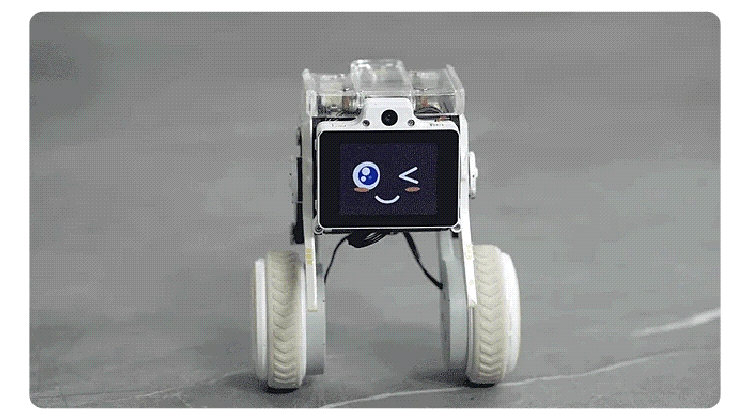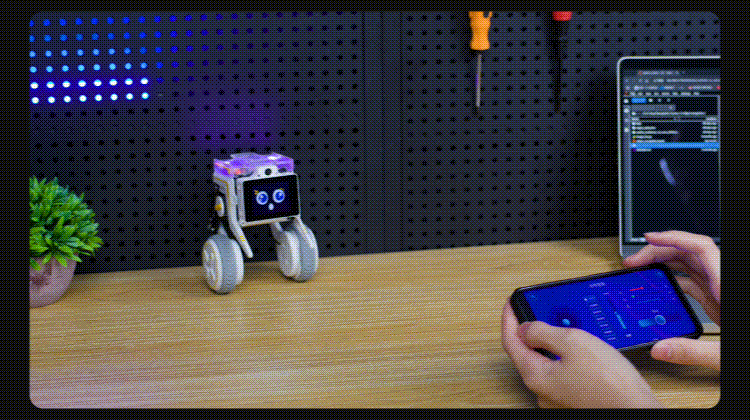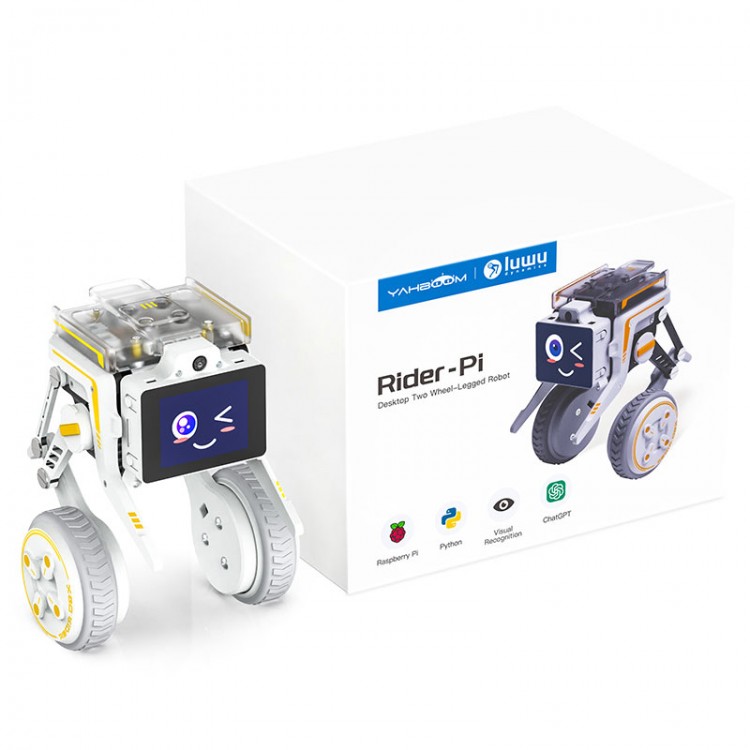
| Quantity | 3+ units | 10+ units | 30+ units | 50+ units | More |
|---|---|---|---|---|---|
| Price /Unit | $534.52 | $523.61 | $507.25 | $485.43 | Contact US |
 XGO-Rider Desktop Two Wheel-legged Smart Robot for Raspberry Pi Wheel-legged AI Robot Development
$548.58
XGO-Rider Desktop Two Wheel-legged Smart Robot for Raspberry Pi Wheel-legged AI Robot Development
$548.58
 JGB37 Hall Version 1:18 16CPR Speed Measuring Motor 2WD Self-balancing Car Chassis Smart Balancing Vehicle Base
$44.97
JGB37 Hall Version 1:18 16CPR Speed Measuring Motor 2WD Self-balancing Car Chassis Smart Balancing Vehicle Base
$44.97
 JGB37 Photoelectric Version 1:18 448CPR Speed Measuring Motor 2WD Self-balancing Car Chassis Smart Balancing Vehicle Base
$48.86
JGB37 Photoelectric Version 1:18 448CPR Speed Measuring Motor 2WD Self-balancing Car Chassis Smart Balancing Vehicle Base
$48.86
Rider-Pi Desktop Two Wheel-Legged Robot Self-Balancing Robot Dog with 5MP Camera & Raspberry Pi CM4
Description:
Rider-Pi is a desktop-level wheel-legged robot. It features a built-in inertial measurement unit (IMU), allowing real-time joint angle adjustment to adapt to various terrains and obstacles. Based on the Raspberry Pi CM4 module and programmed in Python, it supports a wide range of AI functions, including face recognition, color tracking/following, QR code-based motion control, object detection, license plate recognition, and gesture following.
Rider-Pi integrates the iFLYTEK Spark Large Language Model, enabling powerful AI capabilities such as voice Q&A, voice commands, text-to-image generation, and image-to-text interpretation.
Comprehensive learning materials are provided to help users quickly master the development and application of this AI-powered wheeled-leg robot.
Features:
* Based on the Raspberry Pi CM4 module and programmed with Python, it offers enhanced computing performance and broad development support.
* Featuring a high-precision IMU module and a connecting-rod bipedal structure, it combines the mobility of wheeled robots with the obstacle-crossing ability of legged robots.
* Equipped with a 2.0-inch IPS display, it can flexibly present 35 dynamic facial expressions.
* It is capable of performing face recognition, object detection, gesture recognition, license plate recognition, QR code control, and more.
* It supports two remote control methods: Bluetooth and WiFi app (for Android/iOS), both provided for free.
* Compatible with ChatGPT (additional charge applies), it enables voice Q&A, voice control, text-to-image generation, image analysis, and description.
* iFLYTEK Spark Large Model Voice Interaction: Rider-Pi is equipped with a 5MP camera, dual MEMS digital microphones, and a speaker. Powered by the iFLYTEK Spark large model, it offers rich image and voice interaction capabilities, enabling image recognition, speech recognition, and natural language processing to deliver a more intelligent and interactive user experience.
* Voice Q&A: It supports free-form conversations with Rider-Pi via voice. Rider-Pi uses the iFLYTEK Spark large model to recognize voice input and respond accordingly.
* Voice Control: Rider-Pi recognizes voice commands through the iFLYTEK Spark large model and executes the corresponding actions.
* Image-to-Text: Using the iFLYTEK Spark multi-modal image-and-text model, Rider-Pi can take photos with its camera and output the recognition results in both voice and text.
* Text-to-Image: Leveraging the iFLYTEK Spark multi-modal image-and-text model, Rider-Pi can generate a picture based on voice input.
* Integrated Raspberry Pi CM4 Module: Rider-Pi is equipped with a built-in AI module based on the Raspberry Pi CM4 architecture. It features a 2.0-inch IPS color display, four programmable buttons, a 5MP camera, two digital microphones, and a speaker. With excellent visual and voice interaction capabilities, it supports functions such as image recognition, face detection, and voice conversation.
* Multi-Master Collaborative Operation: Rider-Pi adopts a multi-master collaborative architecture. The Raspberry Pi CM4 module acts as the main controller, responsible for computing tasks such as image and voice processing. The ESP32 serves as the secondary controller, managing the robot's power, driving the servos and motors, and handling core motion control algorithms. Through this multi-master collaboration model, Rider-Pi achieves more efficient task processing and resource utilization.
* Detailed Tutorials: Up to 77 systematic and detailed courses help users seamlessly learn machine intelligence. Tutorial link: http://www.yahboom.net/study/Rider-Pi
* Dual Wheel-Leg Joints and Linkage Structure: Rider-Pi uses a dual wheel-leg joint design, integrating the motor and wheel as one unit. The linkage-style wheel-leg structure enables the robot to move smoothly over various terrains, combining the maneuverability of wheeled robots with the obstacle-crossing ability of legged robots.
* Micro Integrated Hub Motor: The hub motor integrates a brushless motor and control circuitry, supporting a peak output torque of up to 2KG·CM. In open-loop speed mode, it can travel over 100 centimeters per second. The motor is equipped with an MCU and a 14-bit high-precision magnetic encoder sensor, enabling 360° angle control. Using an LQR-based balance motion control algorithm, it ensures smooth start and stop as well as fast response. Built-in over-current protection and stall protection extend its service life.
* All-Metal Joint Servo: The joint servo features built-in reduction gears, sensors, and control circuitry. It is equipped with a PID control algorithm system for the servo, including position closed-loop control, allowing 360° angle controllability with an angle recognition accuracy of up to 0.088°. It also includes acceleration, start, and stop functions, enabling mechanical movements that are smooth and lifelike.
* Drive Board: The main drive board is developed based on ESP32, specially designed for Rider-Pi. It supports a voltage input range of 7.2-8.4V and can continuously provide a 5V/5A power output to meet the power needs of peripheral circuits and user-connected external circuits. The board integrates serial communication circuits at two voltage levels: 5V and 3.3V, facilitating serial communication with other external devices. To support personal users in secondary development, the hardware provides three control signal interfaces, which can connect to serial servos, permanent magnet synchronous motors, and cooling fans, meeting users' development requirements.
Product Specifications:
* Model: Rider-Pi Wheel-Legged Robot
* Controller: Raspberry Pi CM4 (2GB RAM) + ESP32
* Programming Language: Python
* Screen: 2.0-inch IPS, 320×240 resolution
* Microphone: Dual MEMS Digital Microphones
* Speaker: 8Ω 2W Speaker
* Camera: 5MP OV5647
* Storage: 32GB SD Card
* Hub Motors: 8.4V Brushless Hub Motors ×2
* Motor Output Torque: 2KG.CM
* Motor Rated Torque: 0.13N·m
* Servo Motors: Serial Bus Metal Servos ×2
* Servo Motor Type: Coreless Motor
* Servo Rated Torque: 4.5KG.CM
* Materials: Aviation Aluminum (Back Cover), ABS (Body), and Carbon Fiber (Bracket)
* Remote Control Method (for iOS/Android): Bluetooth and WiFi
* Communication Method: LAN TCP and Bluetooth Communication
* Battery Life: 1 hour
* Battery: 18500 2S 1400mAh
* Dimensions: 115×135×125mm [Squatting]; 115×115×158mm [Standing]
* Weight: 554g
Parameters of Raspberry Pi CM4 Module:
* Model: Raspberry Pi CM4
* CPU: BCM2711 SoC, single-core Cortex-A72 CPU for ARM, 1.5GHz
* Graphics Processor: VideoCore VI
* Memory: 2GB
* Codec Support: H.265 (HEVC) 4Kp60 video encoding/decoding; H.264 (AVC) video supports 1080p60 encoding and decoding, as well as 1080p30 encoding and decoding
Packing List:
* 1 x Rider-Pi Wheel-Legged Robot (Assembled)
* 1 x 32GB TF Card (Pre-installed)
* 1 x Type-C Data Cable
* 1 x Type-C USB Hub
* 1 x Micro to HDMI-compatible Data Cable
Packaging Details:
* Weight: 0.8kg